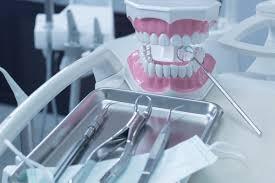The Hidden Spots Your Toothbrush Misses: How to Clean Between Teeth the Right Way

When it comes to oral hygiene, most people assume that brushing twice a day is enough. But the reality is that even the best toothbrush can’t reach every corner of your mouth. Plaque and food particles often hide in the tight spaces between teeth, slowly building up until they cause gum irritation, bad breath, or even cavities. Understanding how to clean these hidden areas the right way can make all the difference in protecting your long-term dental health.
When I began paying closer attention to these overlooked spots, I quickly learned that flossing alone wasn’t always doing the job. Dentists often suggested simple, effective tools like interdental brushes, which made cleaning between teeth less of a struggle and more of a daily habit I could stick to. That single change in my routine helped me understand just how important it is to go beyond brushing.
Why Brushing Alone Isn’t Enough
Brushing is the foundation of oral care. It removes plaque from the front, back, and chewing surfaces of teeth. However, toothbrush bristles—no matter how advanced—can’t slip into the tight contacts between teeth or under the gumline. These areas are prime spots for bacteria to thrive.
Left unchecked, plaque hardens into tartar, which requires professional cleaning to remove. This buildup is one of the main reasons gum disease develops, and it’s also why so many dentists emphasize cleaning between teeth as part of a complete oral hygiene routine.
The Science of Plaque and Gum Disease
Plaque is a sticky film filled with bacteria. When it lingers in those hidden spaces, the bacteria feed on sugars in your food and release acids. These acids irritate gums, weaken enamel, and eventually lead to cavities. Over time, inflamed gums can progress into gingivitis or periodontitis, which is harder to treat and can even result in tooth loss.
This process doesn’t happen overnight. It’s slow and subtle, which is why many people underestimate the importance of cleaning between teeth—until they notice bleeding gums or bad breath.
Flossing: The Traditional Approach
Flossing has long been recommended as the go-to method for interdental cleaning. It’s effective for removing plaque and debris in tight spaces, especially when done correctly with gentle movements that hug each tooth.
However, flossing requires technique and consistency. Many people rush through it or skip it altogether, which reduces its effectiveness. Others find flossing awkward or uncomfortable, making it easy to abandon.
Alternatives to Flossing
Fortunately, there are more options today than ever before to clean between teeth. Water flossers, for example, use streams of water to flush out debris. They’re helpful for people with braces, implants, or bridges.
Other alternatives include floss picks and specially designed dental sticks. While not as thorough as traditional floss, they’re more convenient and encourage consistency, which often makes them better in the long run.
Why Cleaning Between Teeth Matters for More Than Just Your Mouth
Oral health isn’t separate from the rest of your body. Researchers have linked gum disease to systemic conditions like heart disease, diabetes, and even certain respiratory issues. The bacteria from untreated gum inflammation can enter the bloodstream, contributing to broader health risks.
By focusing on the hidden areas between teeth, you’re not just preventing cavities—you’re also supporting your overall well-being.
Building an Easy Daily Routine
Cleaning between teeth doesn’t have to feel like a chore. Here’s how you can make it part of your daily rhythm:
-
Brush twice a day with fluoride toothpaste.
-
Floss or use another interdental cleaning method once a day.
-
Rinse with an antimicrobial mouthwash to reduce bacteria.
-
Keep backup tools on hand so you don’t skip on busy days.
Once it becomes routine, you’ll notice fresher breath, healthier gums, and fewer issues at your dental checkups.
When to Seek Professional Help
Even with the best at-home care, professional cleanings are necessary. Dentists and hygienists can remove tartar, check for gum pockets, and ensure you’re not missing warning signs. If you notice persistent bleeding, swelling, or pain, it’s important to get evaluated sooner rather than later.
Regular visits—at least twice a year—help catch problems early and reinforce the good habits you practice daily.
Conclusion: Don’t Let Hidden Spots Win
Your toothbrush does a lot, but it can’t do everything. Those tight, hidden spaces between teeth are where the real battle for gum health takes place. Whether you floss, use water flossers, or adopt new tools, the key is consistency.
By taking time to clean between your teeth every day, you’re not just preventing plaque—you’re investing in healthier gums, fresher breath, and a stronger smile for life.
- Art
- Causes
- Crafts
- Dance
- Drinks
- Film
- Fitness
- Food
- Oyunlar
- Gardening
- Health
- Home
- Literature
- Music
- Networking
- Other
- Party
- Religion
- Shopping
- Sports
- Theater
- Wellness


